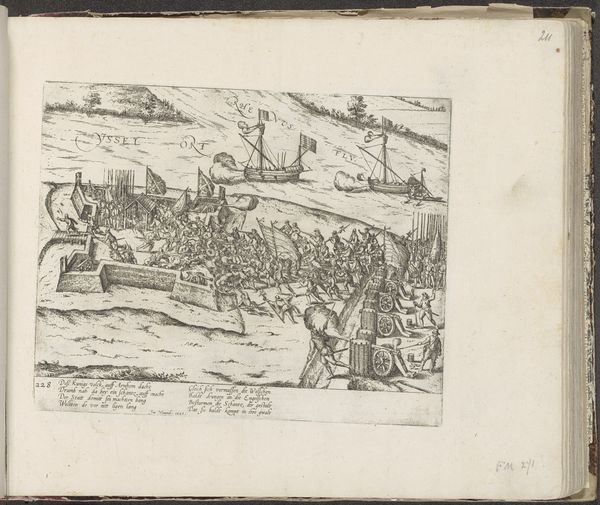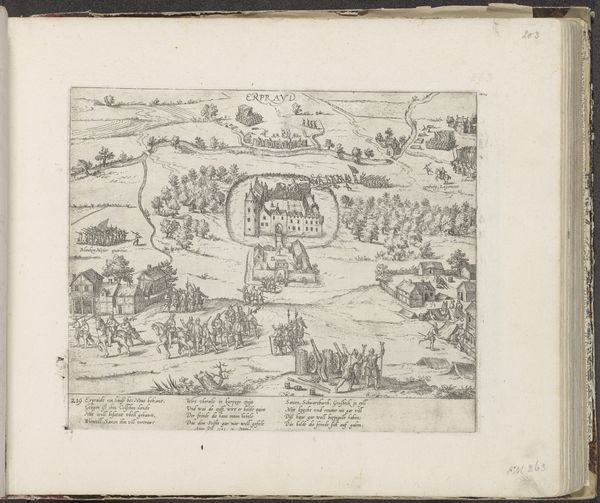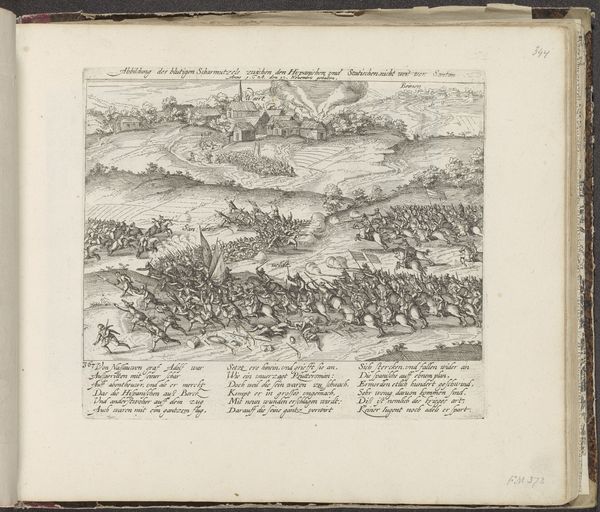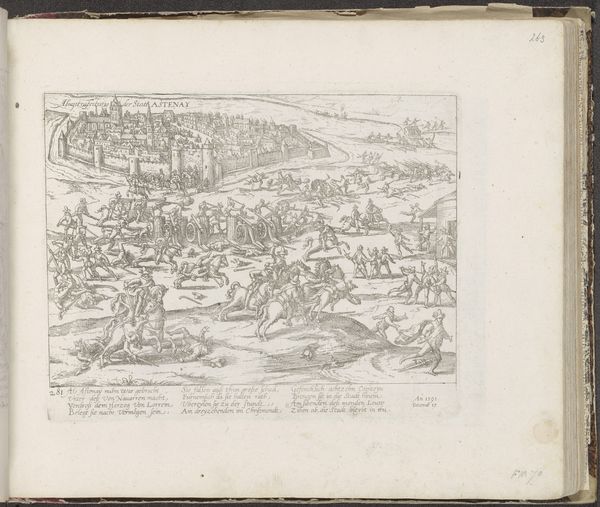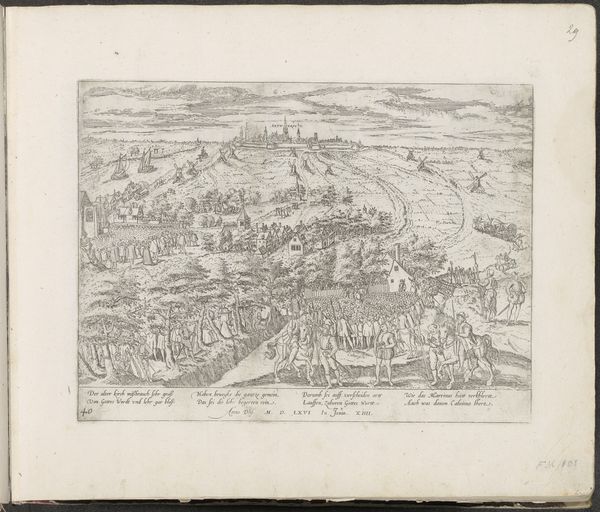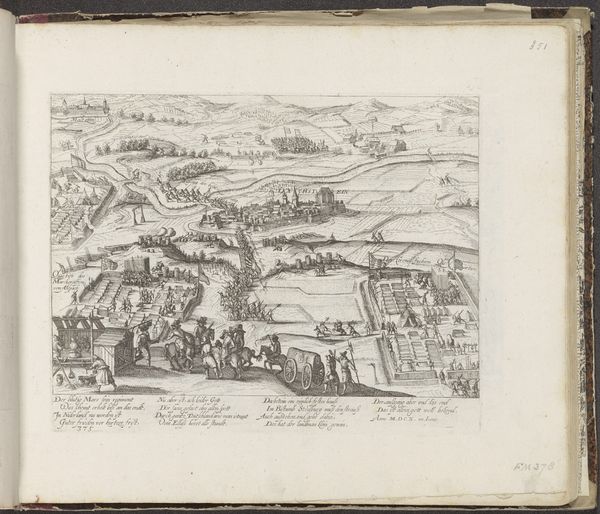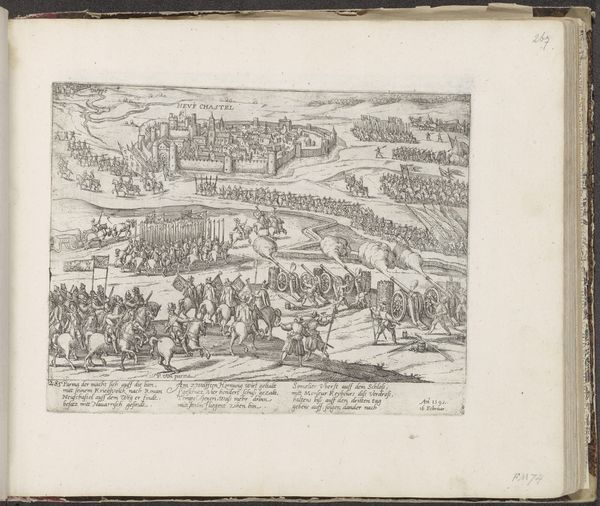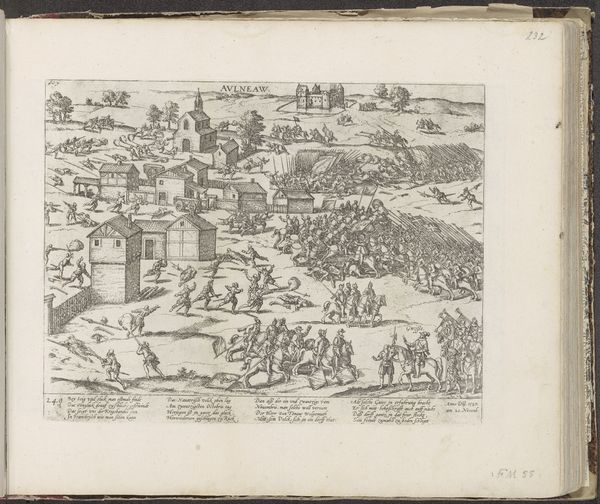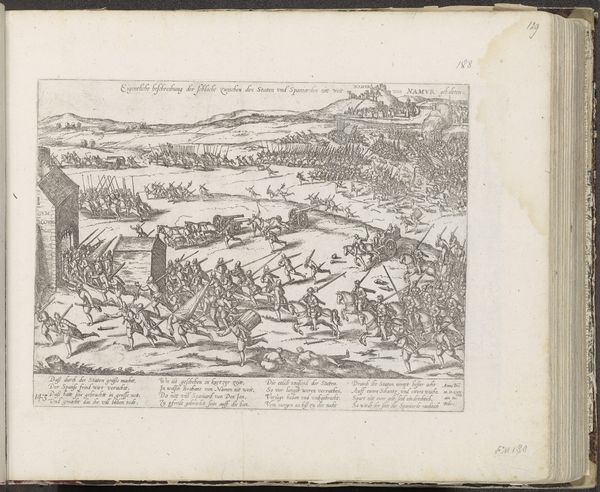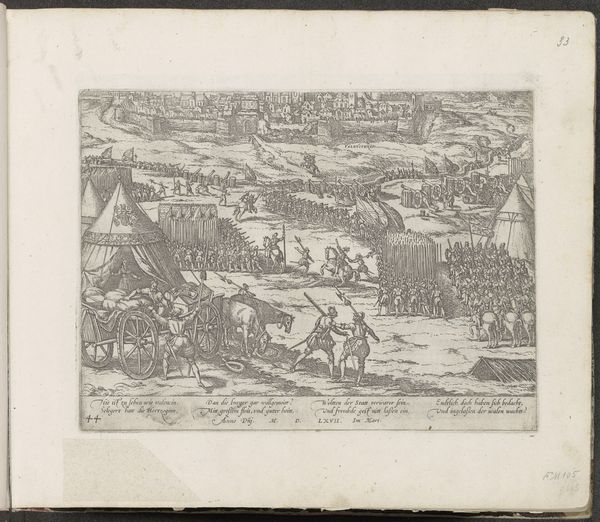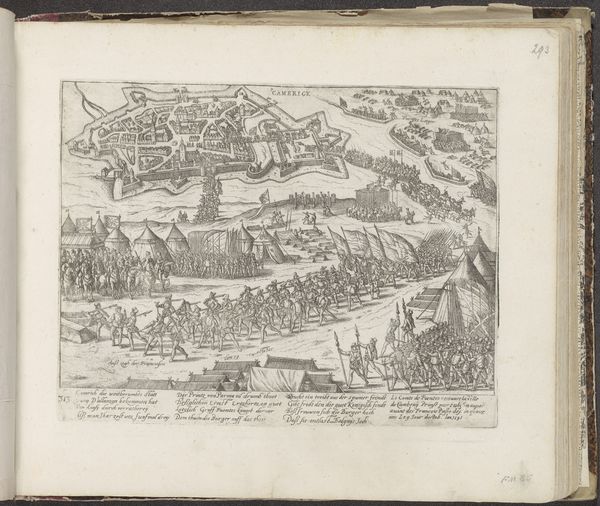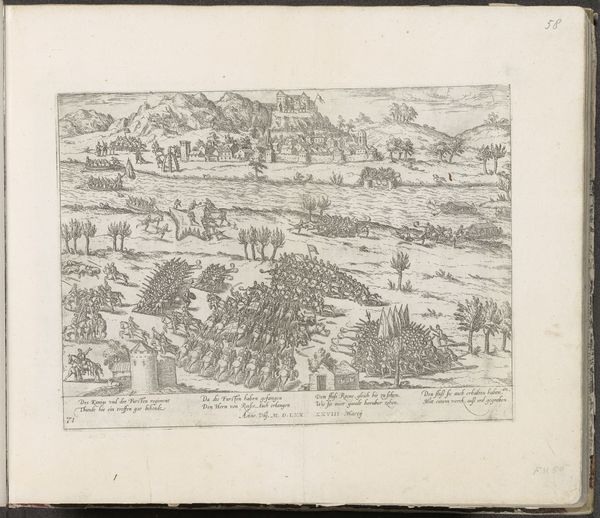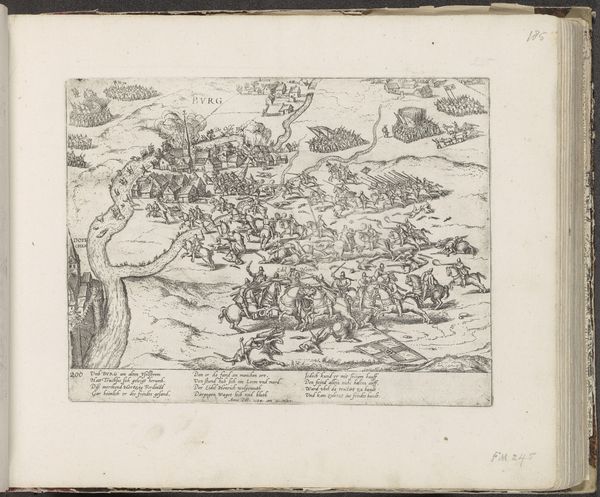
print, engraving
#
medieval
# print
#
landscape
#
line
#
cityscape
#
history-painting
#
engraving
Dimensions: height 222 mm, width 265 mm
Copyright: Rijks Museum: Open Domain
This black ink drawing from 1610 by Frans Hogenberg depicts the ‘Expulsion of the Walloon troops near Reckum’. Hogenberg was a Flemish engraver and mapmaker, who lived through a time of great religious and political upheaval in Europe. This image offers a window into the early 17th century, a period marked by the Dutch Revolt against Spanish rule, where the fault lines of identity, religion, and power intersected. What does it mean to be ‘Walloon’ in this context? The term refers to the French-speaking people of present-day Belgium, who were then under the rule of the Spanish Habsburgs. Their expulsion from Reckum symbolizes the broader struggle for Dutch independence and religious freedom against perceived foreign oppressors. Consider how Hogenberg’s depiction of the Walloon troops might reflect the biases and perspectives of his own cultural and political context. What narratives are being reinforced, and what stories are being silenced? This artwork prompts us to reflect on the complexities of identity, belonging, and the enduring legacy of conflict.
Comments
No comments
Be the first to comment and join the conversation on the ultimate creative platform.
